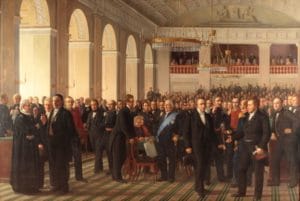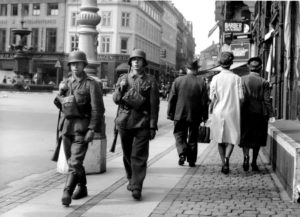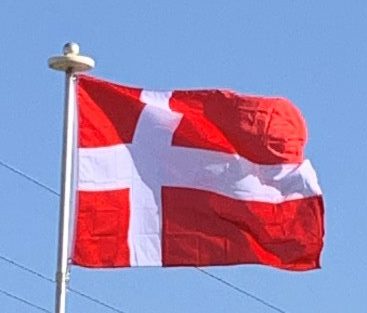
Industrialization came to Denmark in the second half of the 19th century. The nation’s first railways were constructed in the 1850s, and improved communications and overseas trade allowed industry to develop in spite of Denmark’s lack of natural resources. Trade unions developed, starting in the 1870s. There was a considerable migration of people from the countryside to the cities, and Danish agriculture became centered on the export of dairy and meat products.
Denmark maintained its neutral stance during World War I. After the defeat of Germany, the Versailles powers offered to return the region of Schleswig-Holstein to Denmark. Fearing German irredentism, Denmark refused to consider the return of the area without a plebiscite; the two Schleswig Plebiscites took place on 10 February and 14 March 1920, respectively. On 10 July 1920, Northern Schleswig was recovered by Denmark, thereby adding some 163,600 inhabitants and 3,984 square kilometers (1,538 sq mi). The country’s first social democratic government took office in 1924.
In 1939 Denmark signed a 10-year non-aggression pact with Nazi Germany but Germany invaded Denmark on 9 April 1940 and the Danish government quickly surrendered. World War II in Denmark was characterized by economic co-operation with Germany until 1943, when the Danish government refused further co-operation and its navy scuttled most of its ships and sent many of its officers to Sweden, which was neutral. The Danish resistance performed a rescue operation that managed to evacuate several thousand Jews and their families to safety in Sweden before the Germans could send them to death camps. Some Danes supported Nazism by joining the Danish Nazi Party or volunteering to fight with Germany as part of the Frikorps Danmark. Iceland severed ties with Denmark and became an independent republic in 1944; Germany surrendered in May 1945; in 1948, the Faroe Islands gained home rule; in 1949, Denmark became a founding member of NATO.

Denmark was a founding member of European Free Trade Association (EFTA). During the 1960s, the EFTA countries were often referred to as the Outer Seven, as opposed to the Inner Six of what was then the European Economic Community (EEC). In 1973, along with Britain and Ireland, Denmark joined the European Economic Community (now the European Union) after a public referendum. The Maastricht Treaty, which involved further European integration, was rejected by the Danish people in 1992; it was only accepted after a second referendum in 1993, which provided for four opt-outs from policies. The Danes rejected the euro as the national currency in a referendum in 2000. Greenland gained home rule in 1979 and was awarded self-determination in 2009. Neither the Faroe Islands nor Greenland are members of the European Union, the Faroese having declined membership of the EEC in 1973 and Greenland in 1986, in both cases because of fisheries policies.
Geography:
Located in Northern Europe, Denmark consists of the peninsula of Jutland and 443 named islands (1,419 islands above 100 square metres (1,100 sq ft) in total). Of these, 74 are inhabited (January 2015), with the largest being Zealand, the North Jutlandic Island, and Funen. The island of Bornholm is located east of the rest of the country, in the Baltic Sea. Many of the larger islands are connected by bridges; the Øresund Bridge connects Zealand with Sweden; the Great Belt Bridge connects Funen with Zealand; and the Little Belt Bridge connects Jutland with Funen. Ferries or small aircraft connect to the smaller islands. The four cities with populations over 100,000 are the capital Copenhagen on Zealand; Aarhus and Aalborg in Jutland; and Odense on Funen.
